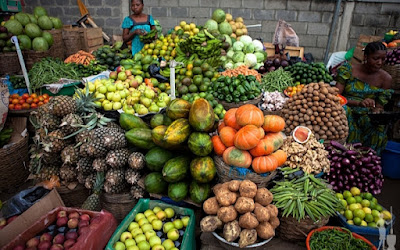 |
| FG Alarm on Rising Food Insecurity |
The Federal Government of Nigeria has raised alarm at the sharp rise in food insecurity. Recent briefings show about 161 million Nigerians now lack reliable access to adequate food. That figure covers homes facing moderate or severe shortages daily. It shows more than two out of three people in the nation cannot count on their next meal .
Nigeria’s total population is put at roughly 235 million, making the food-insecure share close to 69 percent of all citizens . Only about 20 percent of Nigerians now qualify as fully food secure, a stark drop from 65 percent in 2014. Authorities point to rising violence, economic strain and high prices as main drivers of the crisis .
Insecurity in farming regions has cut crop areas sharply. Bandit attacks, kidnappings and herder conflicts push families from fields. That trend has helped drive malnutrition to record highs. At a recent Abuja meeting, the agriculture ministry noted that violent clashes now leave many too fearful to plant their lands. Haushalt sizes shrink as farmers abandon their plots for safety.
Rapid inflation adds to distress. Food input costs and market prices have more than doubled in parts of the country. Reports from the National Bureau of Statistics show food inflation hit 36 percent in June, outpacing general inflation at 28 percent. This makes staples far less affordable to poorest households.
Climate shocks worsen the picture. Severe floods early this year wiped out tens of thousands of hectares of crops in key states like Niger and Kwara. One flood in Mokwa alone affected over 10 000 ha of rice farms, displacing thousands and costing billions of naira in losses . Desertification in the north also shrinks arable land, forcing herders south and fueling fresh disputes.
Malnutrition levels are glaringly alarming beyond just food shortage. A 2021 survey nationwide found over 40 percent of households struggling to afford a somewhat balanced diet. High rates of wasting persist among tiny kids under five years old with severe stunting and dire micronutrient deficiency. Those sobering trends closely tie in with Nigeria's woeful maternal mortality rates which remain shockingly high globally.
Despite the bleak outlook, the government is acting. It has rolled out the Food and Nutrition Security Crisis Preparedness Plan under the World Bank-backed Accelerating Nutrition Results in Nigeria project. The plan aims to build resilience through home gardens, seed distributions across all 774 local councils, and support for 21 states with international funding .
Meanwhile, the federal budget now allocates funds for targeted cash transfers to vulnerable families. So far, five million households have received one-off grants of ₦25 000 each to ease immediate hunger pressures. Analysts note this move helped prevent a sharper spike in food riots seen in other years .
Experts stress need for change over longer term. They call for improved irrigation and cold-chain storage and better roads linking farms with markets. Agricultural research institutes work on seeds resistant to drought. Farmers at Hadejia in Jigawa State test new wheat varieties designed carefully for rains that are erratic.
Nutrition specialists also urge multisector efforts. They point to strong links between food access, health, education and water services. A health ministry official noted that improved school feeding programs and maternal nutrition support must go hand in hand with farm interventions.
Private sector and civil society groups are pitching in. Agritech startups now offer mobile apps for market prices and weather alerts, while NGOs train displaced women in modern field techniques . Some social enterprises link farmers to buyers in cities, cutting out middlemen and raising incomes.
International agencies warn the crisis could deepen without sustained aid. The FAO-WFP Hunger Hotspots report lists Nigeria among countries facing alarming risk of acute hunger in the coming lean season . They recommend urgent scale-up of food assistance and investment in rural livelihoods.
Balanced views shine light on resilience too. Nigeria remains the world’s top producer of cassava and yam, and a leading grower of sorghum, millet and cowpea. With better support, those sectors could feed millions more. Many farmers show remarkable adaptability, shifting planting dates and crop mixes to suit new rains.
To sustain gains, observers say policy must be confident and direct. They note previous plans faltered amid bureaucracy and weak budgets. Now, swift action and clear roles for agriculture, health, finance and security agencies can turn the tide.
Food insecurity alarm has sounded for 161 million Nigerians. Effective response necessitates firm leadership and smart investments in vulnerable communities nationwide. Nigeria's social and economic future hangs precariously in balance preventing hunger crisis from further deteriorating rapidly.
